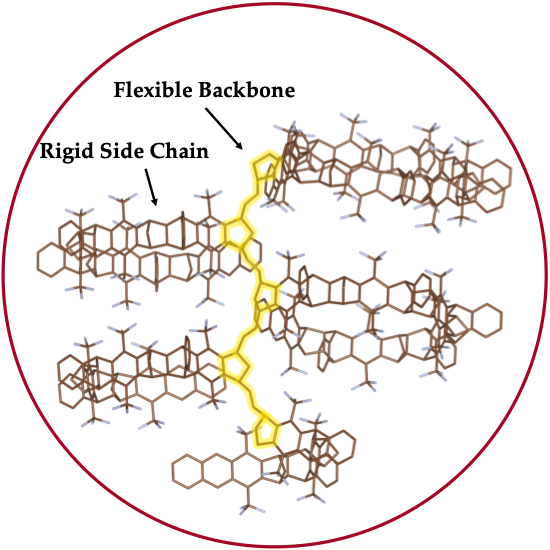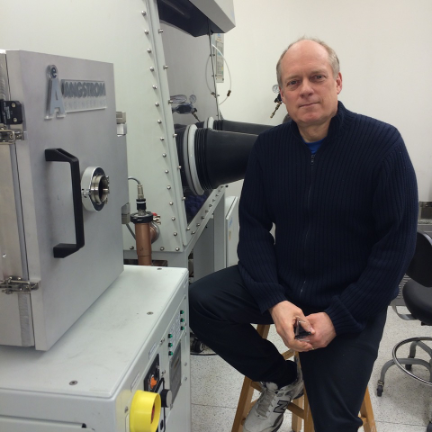Professor Timothy Swager
Kolthoff Lecture #1
Professor Timothy Swager
Department of Chemistry
Massachusetts Institute of Technology
Host: Professor Marc Hillmyer
Functional Materials from Bicyclic Bridged Building Blocks
The ability of triptycene and related structures to produce materials with unusual properties is simply remarkable. Beyond their initial utility in preventing self-quenching in emissive semiconducting polymers for chemical sensors, we have found that they can guide and enhance alignment to liquid crystals, produce high modulus low dielectric constant materials, functional as gas permeable materials, simultaneously give dramatic increases in strength and ductility of polymers, and provide for novel electronic interactions. In this lecture, I will detail our recent triptycene polymer efforts including: (1) post-polymerization functionalization to give materials with high proton and anion conductivities; (2) scalable mechanochemical synthesis of materials that behave as chemical sponges for aromatic molecules; (3) polymerization of shape persistent iptycene macromonomers to produce high free volume materials; (4) the use of high free volume to create high performance gas separation membranes; (5) iptycene materials as stabilizing hosts for catalytic nanoparticles; and (6) polymers and molecules with electronically active elements that communicate by homo-conjugation to give thermally activated delayed fluorescence.

Research
Professor Timothy Swager's research is at the interface of chemistry and materials science, with specific interests in carbon nanomaterials, polymers, and liquid crystals. Reseachers in his group are interested in a spectrum of topics with an emphasis on the synthesis and construction of functional assemblies. Molecular recognition pervades a great deal of their research. Chemosensors require recognition elements to discriminate chemical signals. Electronic polymers are one of the areas that the Swager group is well known for having made many innovations. They are constantly developing new electronic structures, properties, and uses for these materials. Recently, Swager's group launched an effort to create functionalized carbon nanotubes and graphenes. Researchers have advanced new chemical methods for their functionalization and utilization in electrocatalysis and chemical and radiation sensing. In the area of liquid crystals, they make use of molecular complimentarity and receptor-ligand interactions to provide novel organizations.
Professor Swager
Professor Swager joined the Department of Chemistry at Massachusetts Institute of Technology in 1996, holding the title of John D. MacArthur Professor of Chemistry. He is also director of the Deshpande Center for Technological Innovation. He is a member of the National Academy of Sciences and American Academy of Arts and Sciences. He earned his Bachelor of Science in chemistry from Montana State University, and his doctorate at the California Institute of Technology. He was a post-doctoral fellow at MIT. Before joining the faculty at MIT, he was a professor at the University of Pennsylvania.
Kolthoff Lectureship in Chemistry
Izaak Maurits Kolthoff was born on February 11, 1894, in Almelo, Holland. He died on March 4, 1993, in St. Paul, Minnesota. In 1911, he entered the University of Utrecht, Holland. He published his first paper on acid titrations in 1915. On the basis of his world-renowned reputation, he was invited to join the faculty of the University of Minnesota’s Department of Chemistry in 1927. By the time of his retirement from the University in 1962, he had published approximately 800 papers. He continued to publish approximately 150 more papers until his health failed. His research, covering approximately a dozen areas of chemistry, was recognized by many medals and memberships in learned societies throughout the world, including the National Academy of Sciences and the Nichols Medal of the American Chemical Society. Best known to the general public is his work on synthetic rubber. During World War II, the government established a comprehensive research program at major industrial companies and several universities, including Minnesota. Kolthoff quickly assembled a large research group and made major contributions to the program. Many of Kolthoff’s graduate students went on to successful careers in industry and academic life and, in turn, trained many more. In 1982, it was estimated that approximately 1,100 Ph.D. holders could trace their scientific roots to Kolthoff. When the American Chemical Society inaugurated an award for excellence in 1983, he was the first recipient.
